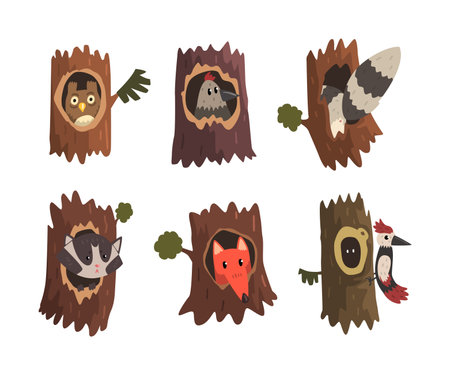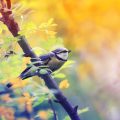Introduction to British Endangered Species
The British countryside is renowned for its rolling hills, ancient woodlands, and vibrant ecosystems. Yet, beneath this picturesque landscape lies a pressing concern: the survival of the UKs native wildlife. An endangered species in Britain is defined as one whose population has declined to critically low numbers or whose habitat faces severe threats, putting its continued existence at risk. Wildlife conservation is not merely about preserving iconic creatures; it is fundamental to maintaining ecological balance and ensuring future generations can enjoy the rich biodiversity that characterises the British Isles. Over recent decades, native British fauna have confronted numerous challenges including habitat loss due to urban expansion and agriculture, pollution, climate change, and the introduction of invasive species. These pressures have placed once-common animals such as the hedgehog and red squirrel on conservation watchlists. As we explore which rare wildlife can still be spotted across Britain’s fields, forests, and wetlands, it becomes clear why understanding and addressing these threats is crucial for safeguarding our natural heritage.
Iconic Mammals Under Threat
When exploring the rolling hills, ancient woodlands, and rugged moorlands of the British countryside, you may be lucky enough to encounter some of the nations rarest and most iconic mammals. However, many of these species are now under significant threat from habitat loss, disease, and competition with invasive species. Below, we take a closer look at three remarkable but endangered mammals—red squirrels, Scottish wildcats, and hazel dormice—highlighting what makes them special and where you might still spot them in the wild.
Red Squirrel (Sciurus vulgaris)
The native red squirrel is an instantly recognisable symbol of Britains natural heritage. Once common across the country, their numbers have plummeted due to habitat fragmentation and competition from the non-native grey squirrel. Today, red squirrels are mostly confined to areas in Scotland, Northern England, and select sites in Wales and Northern Ireland.
Where to Spot Red Squirrels
| Region | Top Locations |
|---|---|
| Northern England | Kielder Forest, Formby (Merseyside) |
| Scotland | Cairngorms National Park, Isle of Arran |
| Northern Ireland | Mourne Mountains, Glenariff Forest Park |
Scottish Wildcat (Felis silvestris grampia)
The elusive Scottish wildcat is often dubbed Britain’s ‘tiger’ due to its fierce nature and rarity. These cats are critically endangered, with perhaps fewer than 300 individuals remaining in isolated pockets of the Scottish Highlands. Habitat loss and hybridisation with domestic cats threaten their survival.
Where to Spot Scottish Wildcats
- Cairngorms National Park
- Ardnamurchan Peninsula
- Morvern Peninsula
If you’re walking remote Highland forests or quiet glens at dusk or dawn, keep your eyes peeled for a bushy tail with a blunt black tip—a key sign you’ve glimpsed a true wildcat.
Hazel Dormouse (Muscardinus avellanarius)
This tiny nocturnal mammal is rarely seen but much loved for its golden fur and endearing appearance. The hazel dormouse has suffered dramatic declines due to modern farming practices and loss of traditional woodland management. Its stronghold remains in southern England and parts of Wales.
Where to Spot Hazel Dormice
| Region | Notable Sites |
|---|---|
| South East England | Surrey Hills, Kent Downs |
| South West England | Dartmoor National Park, Exmoor edges |
| Wales | Wye Valley Woodlands |
Spotting Tips:
- Look out for nest boxes on conservation walks—many woods install these to monitor populations.
- Dormice are most active from May to October; listen for rustling in dense hedgerows at dusk.
The British countryside harbours an astonishing range of rare mammals if you know where—and when—to look. With careful observation and respect for their habitats, you can play a part in safeguarding these treasured icons for generations to come.

3. Vulnerable Birds of the British Isles
Elusive and At-Risk Avian Residents
The British countryside is home to a remarkable variety of birdlife, yet several iconic species are now teetering on the brink. Among these, the hen harrier, bittern, and capercaillie stand out both for their rarity and the urgency of their conservation needs. Spotting these birds has become a coveted experience for birdwatchers, underscoring the critical importance of their habitats.
Hen Harrier: The Ghost of the Moorlands
Once widespread across upland Britain, the hen harrier (Circus cyaneus) is now one of our most persecuted raptors. Its striking silver plumage and low, gliding flight make it a haunting presence on heather moors, especially in northern England and Scotland. Today, illegal persecution linked to grouse moor management has drastically reduced its numbers. For those hoping to catch a glimpse, RSPB reserves such as Geltsdale in Cumbria offer some of the best opportunities to observe these elusive birds during their summer breeding season.
Bittern: The Reedbed Boomer
The bittern (Botaurus stellaris) is an expert at remaining unseen, thanks to its streaky camouflage that blends perfectly into reedbeds. Its distinctive booming call resonates across marshes in springtime, but actually sighting one can be a real challenge. Once almost extinct in the UK, conservation efforts have helped populations recover slightly, yet they remain highly vulnerable. Top spots for hopeful birders include Minsmere in Suffolk and Leighton Moss in Lancashire, where careful habitat management continues to support this secretive species.
Capercaillie: A Highland Rarity
The capercaillie (Tetrao urogallus), with its dramatic courtship displays and robust build, is Britain’s largest grouse. Restricted now to ancient pine forests of the Scottish Highlands—particularly Strathspey—this species has faced steep declines due to habitat loss and disturbance. The dense Caledonian forests near Aviemore are your best bet for sightings, though conservationists urge visitors to keep disturbance to a minimum during breeding season.
Understanding the Decline
Habitat loss, climate change, human disturbance, and illegal persecution are major drivers behind the dwindling numbers of these remarkable birds. Conservation organisations across the UK continue their efforts through habitat restoration and public awareness campaigns. Birdwatching not only offers a chance to witness these rare species but also serves as a reminder of our responsibility towards safeguarding Britain’s natural heritage for future generations.
4. Rare Reptiles, Amphibians, and Invertebrates
The British countryside is not only a haven for birds and mammals but also shelters a fascinating array of rare reptiles, amphibians, and invertebrates. Although these creatures are often elusive, patient wildlife enthusiasts may be rewarded with sightings of some of the UKs most threatened species.
Seldom-Seen Species to Look Out For
| Species | Habitat | Conservation Status |
|---|---|---|
| Smooth Snake (Coronella austriaca) | Heathlands in southern England | Britain’s rarest reptile; protected by law |
| Great Crested Newt (Triturus cristatus) | Ponds, marshes, and damp grassland across the UK | European Protected Species; declining populations |
| Duke of Burgundy Butterfly (Hamearis lucina) | Limestone grasslands and scrubby hillsides | Rapidly declining; conservation priority |
Spotting Tips and Responsible Wildlife Watching
If you hope to spot these remarkable species, remember that patience, silence, and minimal disturbance are key. Stick to established footpaths and avoid handling or approaching animals closely—especially during breeding seasons. The smooth snake, for example, is a master of camouflage among heathland heather; slow movements and sharp eyes are essential. Great crested newts are most visible at dusk near their breeding ponds in spring.
Guidelines for Safe & Respectful Spotting
- Avoid using flash photography or bright torches when observing nocturnal amphibians.
- Never remove animals from their natural habitat.
- If recording sightings, report them to local wildlife trusts to aid conservation efforts.
Invertebrate Highlights: Butterflies and Beyond
The British Isles are home to several rare butterflies like the Duke of Burgundy and the High Brown Fritillary. These delicate insects are indicators of healthy habitats; spotting one is a sign you’re in a truly special place. To support their survival, tread lightly on wildflower meadows and avoid disturbing nectar sources.
5. Flora and Habitat: The Backbone of Survival
The intricate web of life in the British countryside depends not only on its rare animal inhabitants, but equally on the plants and habitats that sustain them. Endangered plant species such as the Lady’s Slipper Orchid, Spiked Rampion, and Fen Orchid are now found only in a handful of locations, their survival threatened by habitat loss, changing land use, and competition from invasive species. These plants do more than simply add colour to our meadows and woodlands; they provide food sources, shelter, and breeding grounds for many forms of wildlife. When ancient hedgerows are removed or wetlands drained, entire communities of insects, birds, and mammals can suffer precipitous declines.
The Impact of Habitat Loss
Across Britain, traditional landscapes have been altered by agricultural intensification, urban expansion, and infrastructure development. Heathlands, peat bogs, and wildflower-rich grasslands have shrunk dramatically over the past century. As these habitats disappear or fragment, species such as the Hazel Dormouse or Marsh Fritillary butterfly lose essential corridors for movement and reproduction. The knock-on effect is a reduction in genetic diversity and increased vulnerability to disease or extreme weather events.
Interconnectedness Within Living Systems
The British countryside is an interconnected system where every species—from rare orchids to common pollinators—plays a role in supporting the whole. For instance, the decline of native wildflowers reduces nectar sources for bees and butterflies; in turn, fewer pollinators mean less successful plant reproduction. Larger animals like birds rely on healthy insect populations for food, illustrating how even small changes can ripple through entire ecosystems.
Restoring Balance: What Can Be Done?
Conservation efforts increasingly recognise the need to protect not just individual species but whole habitats. Programmes to replant hedgerows, restore wetlands, or manage woodlands using traditional techniques help foster biodiversity at every level. By supporting local conservation initiatives or simply leaving a patch of garden to grow wild, individuals can make a tangible difference to Britain’s endangered flora—and by extension, its rarest wildlife.
6. Conservation and How You Can Get Involved
Protecting endangered species in the British countryside requires a collective effort, combining national initiatives, local action, and individual responsibility. Across the UK, numerous conservation organisations work tirelessly to safeguard rare wildlife and their habitats. Charities such as the Wildlife Trusts, RSPB (Royal Society for the Protection of Birds), and Butterfly Conservation play pivotal roles in research, education, and habitat management. Meanwhile, local groups often run hands-on projects focused on specific reserves or species, welcoming volunteers from all walks of life.
Supporting Conservation Organisations
One of the most effective ways to contribute is by supporting these organisations. Membership fees, donations, and participation in fundraising events provide vital funding for ongoing conservation work. Many charities also offer citizen science programmes, allowing you to help monitor wildlife populations or report sightings—an essential component in tracking endangered species.
Volunteering Opportunities
If you prefer practical involvement, volunteering offers a rewarding route. Activities range from habitat restoration—such as planting native hedgerows or clearing invasive species—to assisting with educational outreach in local schools. Check with your county’s Wildlife Trust or community nature reserve for upcoming opportunities. Even a few hours each month can make a tangible difference.
Responsible Countryside Visits
Your own behaviour during countryside outings matters too. Stick to marked footpaths to avoid disturbing sensitive habitats, keep dogs under control—especially during bird nesting season—and always take litter home. Avoid picking wildflowers or fungi and resist the temptation to approach or feed wild animals.
Practical Steps for Everyone
Even small actions can add up: use your voice to support wildlife-friendly policies, participate in local bio-blitz events, install bird boxes or insect hotels at home, or join a “Big Garden Birdwatch” weekend. Sharing your enthusiasm for rare wildlife with friends and family helps spread awareness and builds a culture of care for Britain’s unique natural heritage.
Together, these efforts not only protect endangered species but also ensure that future generations have the opportunity to experience the remarkable diversity of wildlife that makes the British countryside so special.


